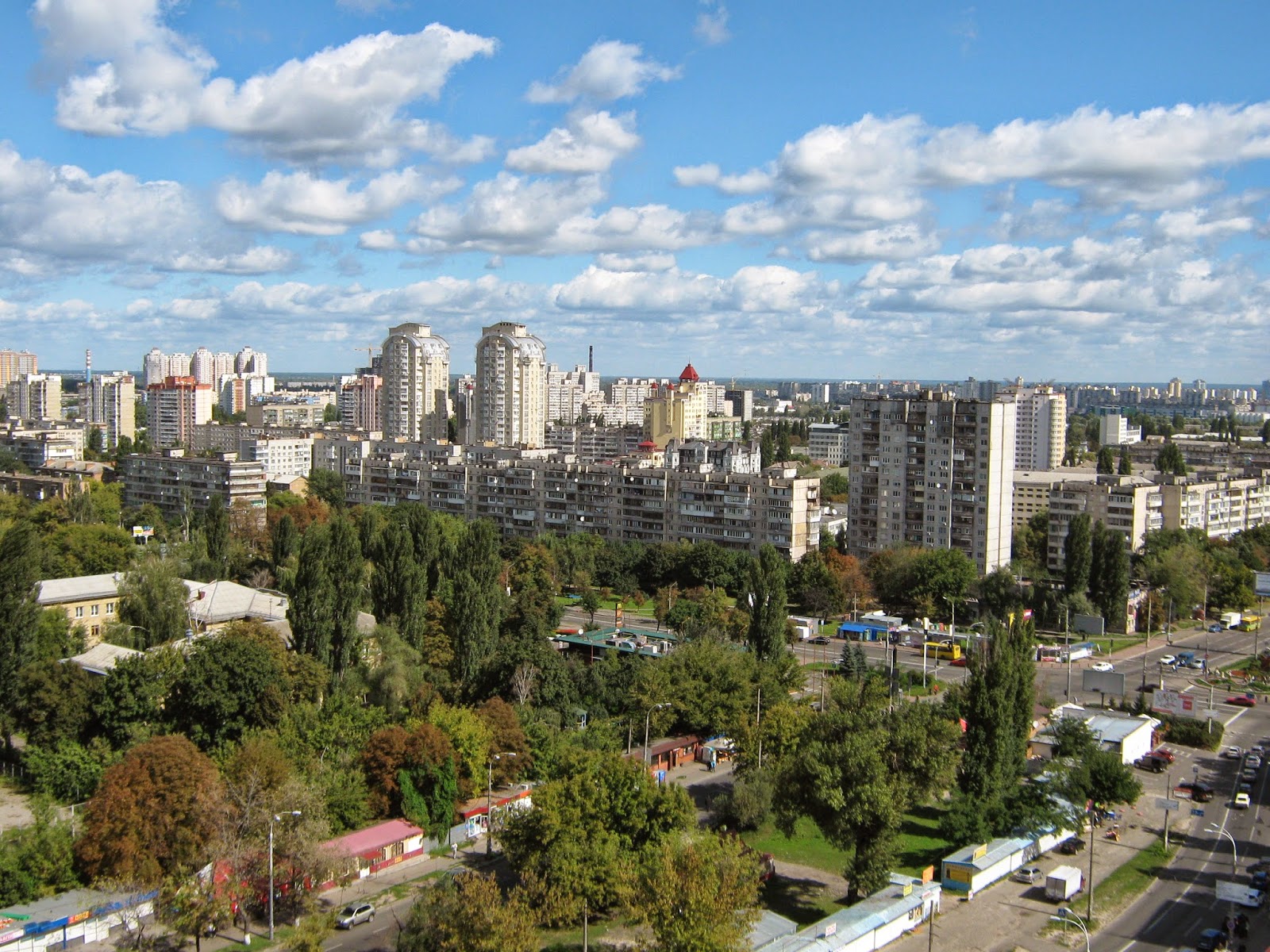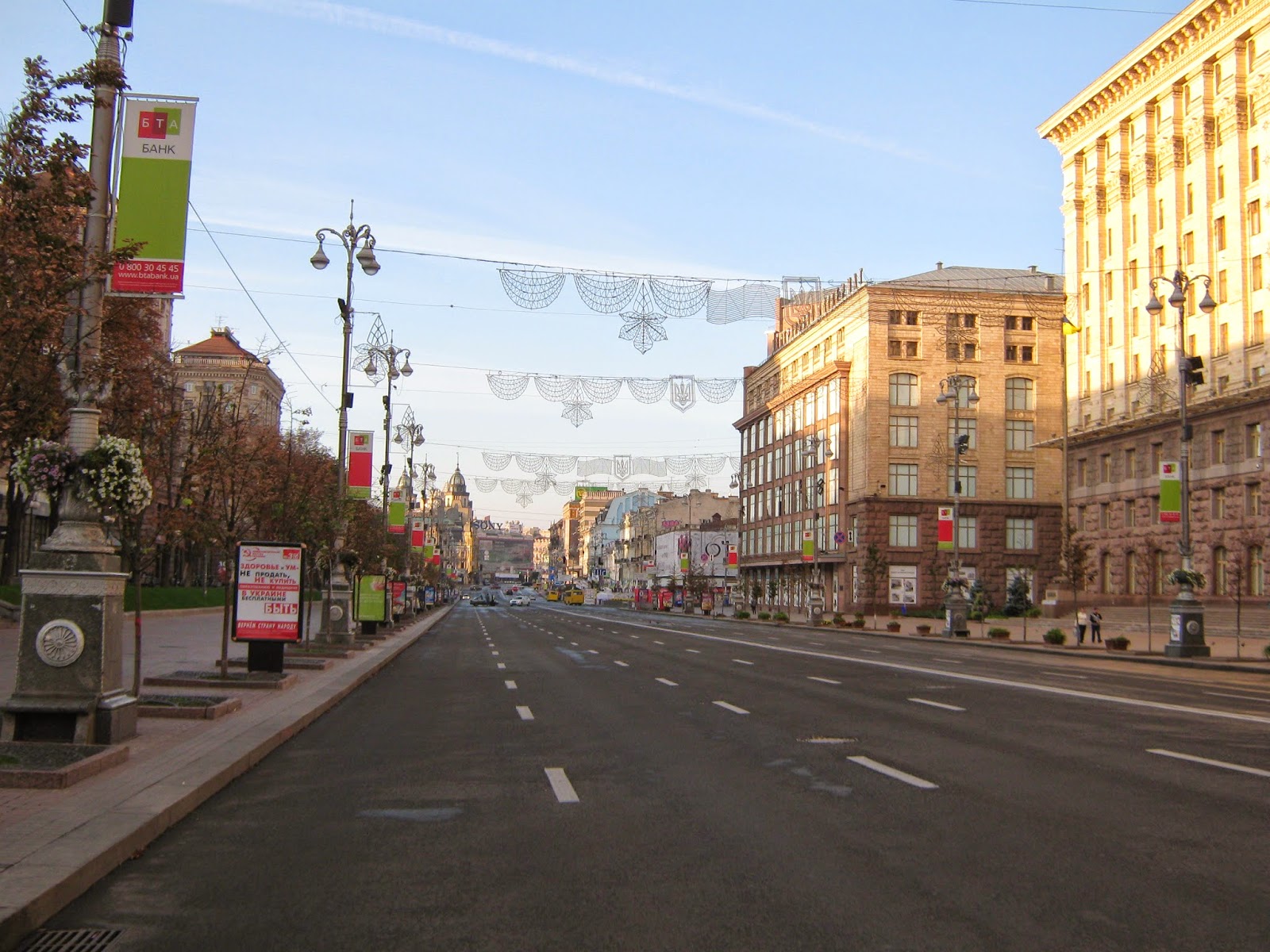
 Северную часть Киева неспроста называют Оболонью.
Это один из крупнейших жилых массивов нашего города. Его особенность в
том, что он практически весь построен на намытом грунте. Когда-то на
этом месте были роскошные луга с множеством живописных озер. Несмотря на
то, что Оболонь заливалась весенними паводками Днепра, Почайны и
Сетомли она привлекала племена первобытных людей.
Северную часть Киева неспроста называют Оболонью.
Это один из крупнейших жилых массивов нашего города. Его особенность в
том, что он практически весь построен на намытом грунте. Когда-то на
этом месте были роскошные луга с множеством живописных озер. Несмотря на
то, что Оболонь заливалась весенними паводками Днепра, Почайны и
Сетомли она привлекала племена первобытных людей.В начале нашей эры, когда стало возможным постоянное заселение Оболони, её жители занимались разведением домашнего скота: коней, собак, овец, коз, кур, свиней, куропаток, быков. Среди дикой природы встречались зубры, олени, лоси, кабаны, бобры. А в водоёмах водилась разнообразнейшая рыба: сомы, щуки, осетры, сазаны, карповые, судаки. Они украшали повседневный стол наших предков.
Именно на Оболони было обнаружено наиболее крупное поселение древних славян, которые стояли у истоков основания Киева. Археологические материалы свидетельствуют, что ранние славяне имели высокий для того времени уровень жизни. Они в совершенстве освоили технику изготовления изделий из бронзы, железа и керамики. Кроме того древние жители Оболони вели активные обменные связи с античными городами Северного Причерноморья.
В языческие времена на пути к оболонским лугам стоял идол бога Велеса, покровителя домашних животных. Скот ассоциировался с богатством и достатком, поэтому киевляне особо чтили это божество. Оболонь была излюбленным местом охоты и отдыха киевских князей.
На Оболони было много ручьев и рек. Среди них самые знаменитые Почайна и Сетомля. Это были достаточно глубокие реки. На Почайне находилась киевская гавань — Притыка. Именно сюда заходили на своих ладьях послы и купцы из разных стран. В Сетомле в 1034 году потонуло много печенегов во время битвы с Ярославовым войском. Летопись подает нам интересный факт, произошедший в 1065 году на речке Сетомле. Рыбак, ловивший рыбу, вытащил в неводе какое-то существо, на которое целый день приходил смотреть любопытный народ.
Шло время и земли Оболони стали настолько престижными, что их стремились заполучить многие. Мало того в спорах за границы наделов доходили не только до судебного разбирательства, а и до рукоприкладства. Сохранились документы, в которых земельные недоразумения между мещанами, монастырями и магистратом решали первые лица державы. Справедливость на Оболони наводили гетманы Богдан Хмельницкий и Иван Мазепа, царь Алексей Михайлович и Петр I .
Каждый год в начале августа множество паломников направлялись в Вышгород почтить память киевских князей Бориса и Глеба. Выбирая кратчайший путь через Оболонь киевляне иногда были вынуждены преодолевать водные преграды: ручьи, небольшие озера, болота. Часто мещане и купцы использовали Оболонь для переправки контрабанды. Так в 1774 году были задержаны возле Иорданского озера, на заставе, мещане Блистовойцев и Католиченко, пытавшиеся незаконно провезти в Киев французское вино.
В 1811 году, утром 9 июля на Подоле начался большой пожар. Люди в панике с остатками спасенного добра бежали на Оболонь. Город горел три дня. И подольские погорельцы вынуждены были жить в шалашах, со слезами наблюдая гибель любимого города. Среди потерпевших был известный киевский проповедник и писатель Иоанн Леванда, разделивший участь всех горожан. Слух о том, что пожар возник не случайно закрепил желание многих еще пожить на Оболони, пока все уладится.
В 1897 году на Оболонском заливе началось строительство гавани Императора Николая II по проекту известного инженера Николая Максимовича. После завершения строительства в 1899 году, ревизионной комиссией была произведена проверка, которая выявивила ряд недостатков. По мнению ревизоров строительство велось спустя рукава. В результате всех упущений убыток для городской кассы составил около ста тысяч рублей.
В начале века на Оболони были рыбацкие поселки. В выходные дни, кто пешком, а кто на лодках прибывали на луг поохотиться и порыбачить или просто отдохнуть от городской жизни.
В 1939 году в рамках оборонной программы на Оболони развернулось секретное строительство. Проектом предусматривалось сооружение под Днепром подрусловой железной дороги. На строительстве работало около 12 тысяч человек. Но в 1941 году началась война и все работы были свёрнуты далеко до завершения. Теперь в урочище Наталка об этом утопическом проекте напоминает огромный железобетонный кессон — безмолвный памятник тех лет.
Археологические исследования, документальные источники раскрывают новые тайны истории Оболони. Она является неотъемлемой и яркой частью исторического, культурного и духовного наследия нашего города.
--------------
 The northern part of Kiev is called with an ulterior motive by Obolonyyu. It is one of the largest inhabited massifs of our city. Its feature that it practically all is constructed on the washed soil. Once on this place there were magnificent meadows with a set of picturesque lakes. In spite of the fact that Obolon was filled in with spring floods of Dnieper, Pochayna and Setomli it attracted tribes of primitive people.
The northern part of Kiev is called with an ulterior motive by Obolonyyu. It is one of the largest inhabited massifs of our city. Its feature that it practically all is constructed on the washed soil. Once on this place there were magnificent meadows with a set of picturesque lakes. In spite of the fact that Obolon was filled in with spring floods of Dnieper, Pochayna and Setomli it attracted tribes of primitive people.At the beginning of our era when continuous settling of Oboloni became possible, her inhabitants were engaged in cultivation of a livestock: horses, dogs, sheep, goats, hens, pigs, partridges, bulls. Among the wild nature bisons, deer, elks, boars, beavers met. And the diverse fish was found in reservoirs: catfishes, pikes, sturgeons, sazans, karpovy, pike perches. They decorated a daily table of our ancestors.
On Oboloni the largest settlement of ancient Slavs who stood at the origins of the basis of Kiev was revealed. Archaeological materials testify that early Slavs had a standard of living high the then. They in perfection mastered technology of production of products from bronze, iron and ceramics. Besides ancient inhabitants of Oboloni conducted active exchange communications with the antique cities of Northern Black Sea Coast.
In pagan times for ways to obolonsky meadows there was an idol of god Velez, patron of pets. The cattle was associated with wealth and prosperity therefore inhabitants of Kiev especially honored this deity. Оболонь was a favourite place of hunting and rest of the Kiev princes.
On Oboloni there were many streams and the rivers. Among them the best-known Pochayna and Setomlya. It were rather deep rivers. On Pochayna there was the Kiev harbor — Prityka. Exactly here ambassadors and merchants from the different countries came on the castles. Many pecheneg during fight with Yaroslavovy army sank in Setomle in 1034. The chronicle gives us the interesting fact which happened in 1065 on Setomle's small river. The fisherman catching fish pulled out some being at whom the whole day I came to watch the curious people in a seine.
There was time and Oboloni's earth became so prestigious that many sought to catch them. Besides in disputes for borders of plots reached not only judicial proceedings, and and a manhandling. Documents in which land misunderstanding between petty bourgeoises, monasteries and magistrate were solved by the top officials of the power remained. Justice on Oboloni was directed by hetmen Bogdan Khmelnytsky and Ivan Mazepa, the tsar Alexey Mikhaylovich and Peter I.
Every year at the beginning of August a great number of pilgrims went to Vyshgorod to honor memory of the Kiev princes Boris and Gleb. Choosing the shortest way through Obolon inhabitants of Kiev sometimes were compelled to overcome water barriers: streams, small lakes, bogs. Often petty bourgeoises and merchants used Obolon for a smuggling transportation. So in 1774 petty bourgeoises Blistovoytsev and Katolichenko trying to take illegally to Kiev French wine were detained near the Jordanian lake, on an outpost.In 1811, in the morning on July 9 on the Hem the heavy fire began. People in a panic from the remains of the rescued good ran to Obolon. The city burned three days. And Podolsk fire victims were compelled to live in tents, with tears observing death of the favourite city. Among the victims there was a famous Kiev preacher and the writer Ioann Levanda who shared a fate of all citizens. The hearing that the fire arose not incidentally consolidated desire of many still to live on Oboloni until everything is settled.
In 1897 on the Obolonsky gulf construction of harbor of the Emperor Nicholas II on the project of the famous engineer Nicolay Maksimovich began. After completion of construction in 1899, the audit commission made check which vyyavivit a number of shortcomings. According to auditors construction was conducted carelessly. As a result of all omissions the loss for city cash desk made about hundred thousand rubles.
At the beginning of the century on Oboloni there were fishing settlements. On the weekend who on foot and who by boats arrived to a meadow to hunt and fish or simply to have a rest from city life.
In 1939 within the defensive program on Oboloni confidential construction was developed. The project provided a construction near Dnieper of the podruslovy railroad. About 12 thousand people worked at construction. But in 1941 war began and all works were curtailed far before end. Now in Natalk's natural boundary reminds a huge ferroconcrete caisson of this utopian project — a silent monument of those years.
Archaeological researches, documentary sources reveal new secrets of history of Oboloni. It is the integral and bright part of historical, cultural and spiritual heritage of our city.




